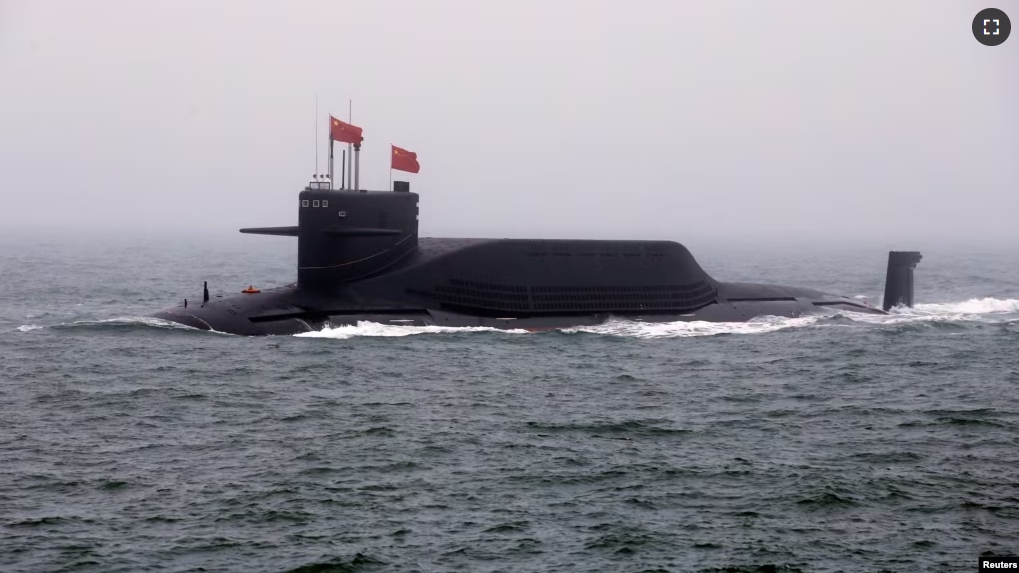China is developing a new generation of nuclear-armed submarines that, experts say, will be more difficult for the United States and its allies to find.
The new submarines known as Type 096 will be quiet, aided in part by Russian technology. Military experts expect them to be ready within 10 years.
Researchers met at the U.S. Naval War College and published their findings on the submarines in August. “The Type 096s are going to be a nightmare,” said Christopher Carlson, one of the researchers. “They are going to be very, very hard to detect.”
The Chinese Navy has regularly sent nuclear-armed submarines out of Hainan Island in the South China Sea. However, the older Type 094 boats are noisy. That is a major problem for military submarines.
The research paper noted that the new Type 096 submarine will be similar to Russian submarines in terms of stealth, sensing equipment and weapons. The findings are based partly on Chinese military publications, speeches by senior military officers, and other information.
Satellite images taken in November of China’s new Huludao shipbuilding center show parts of a large submarine being built. The report said the boats are expected to be operational by 2030.
The new submarine is likely to be much larger than Type 094. The design, based on Russian technology, enables the submarine to contain a “raft” attached to a complex rubber support system to reduce engine noise. Neither the Russian nor the Chinese defense ministries answered Reuters’ requests for comment.
Carlson told Reuters he did not believe China had gained the latest Russian submarine technology. But China would be able to produce a submarine stealthy enough to compare to Russia’s Akula boats.
“We have a hard time finding and tracking the improved Akulas as it is,” Carlson said.
A new cold war?
Military experts say the tracking of Chinese submarines is increasingly an international effort. Both the Japanese and Indian militaries have aided the United States, Australia and Britain.
The countries have increased antisubmarine warfare exercises and deployed submarine hunting aircraft around Southeast Asia and the Indian Ocean.
The possibility of more modern and quiet Chinese submarines partly led to a deal between Australia, Britain and the U.S. The agreement calls for British and U.S. attack submarines to be deployed in Western Australia. By the 2030s, Australia expects to launch its first nuclear-powered attack submarines with British technology.
Vasily Kashin is a Chinese military expert based in Moscow at HSE University. He said Chinese engineers might have made the improvements described in the report.
Kashin said there was no known sharing agreement between China and Russia outside of a 2010 agreement related to nuclear reactors. He believed that China likely gained important Russian technology in the 1990s after the breakup of the Soviet Union.
“China is not an adversary of Russia in the naval field,” Kashin said. “It is not creating difficulties for us; it is creating problems for the U.S.”
I’m Mario Ritter, Jr.
Greg Torode reported this story for Reuters. Hai Do adapted it for VOA Learning English.
_________________________________________________
Words in This Story
nightmare –n. a bad dream; a bad situation
detect –v. to identify the presence of something by looking for it, especially something that is not easy to find
stealth –n. an area of technology that deals with avoiding detection by sensing devices like radar, sonar and other technologies
track –v. to look for and follow something
adversary –n. an opponent or enemy
